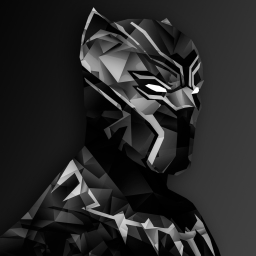Hyper-lanes
Manifestation
Invisible to the naked eye, hyper-lanes are 'ripples' of space-time that travel throughout the Milky Way galaxy. It is theorized these naturally occurring ripples were first formed in the Big Bang that formed the galaxy, and have been warped and curved toward various system's by the gravity of those system's stars and the rotation and movement of the galaxy itself. These ripples form a complex network connecting a vast majority of the galaxy's systems, far more dense along each 'arm' of the galaxy, but with sporadic 'connections' where some arms come relatively near each other.
Some hyper lanes have become merged over the centuries, creating forks that split off into multiple directions. These forks can be dangerous for vessels traveling along a lane, as most cultures don't have the technology required to safely pass through them - Instead, the currents of a hyper-lane are divided between the branches, tearing the vessel in the process if it doesn't abort the jump in time.
Compared to the jet streams of most atmospheric planets, hyper-lanes are used by all known space-faring cultures capable of interstellar travel as a conduit for a far more efficient faster than light travel. This allows spacecraft to travel much farther distances than would be possible using non-hyper-lane based travel, the fastest of which would take months or even years to traverse the distance between two neighboring star systems.
Artificial Lanes
While most hyper-lanes are naturally formed, winding from one system to the next, there are a handful of artificially constructed hyper-lanes. Most notable is the Hy'Dovo - An artificially formed and maintained ripple connecting the Dovolish Sect with the Hydari Corporate's core worlds. Currently, the Dovolish are the only known race with the knowledge and technology required to create such a lane, though other factions are experimenting with various methods of producing artificial lanes. Rumors abound that the Dovolish have the ability to collapse a naturally formed hyper-lane as well.
Detecting Lanes
While various cultures first discovered hyper-lanes by varying means, the most efficient method of detecting and measuring a lane is by observing its effects on light and other space matter traveling through and across them. The space-time ripples cause minute distortions in trajectory and speed as matter and energy passes through them. With the right technology and the knowledge of what to look for, spotting these currents is as simple as noticing a breeze blowing a blade of grass.
Using Lanes
Despite the Dovolish' technological advantages in hyper-lane travel, other cultures are capable of traveling along these networks including the Sol Empire, Democratic Republic of Terra, United Arshanov Socialist Federation, Republic of Sion, and very recently, the Drakari Union. While the theoretical speeds a hyper-lane can reach are extremely high, most vessels are incapable of safely reaching these speeds - The strains imposed on the crew and hull by the acceleration required would likely cause death and severe damage, and most current drive systems require some form of fuel or energy that would be drained rapidly trying to reach these speeds.
The exact method of traveling along these lanes can vary, but generally involves a specialized piece of equipment. One method used by the Arshans is a Hyperdrive that excites particles and release them into the ripple. These particles create a strong 'current' that propels the ship in the intended direction through the ripple. The more excited particles are ejected, the stronger the current.
Some factions have even developed ways of manipulating hyper-lane connections, such as the Solus 'Jump Router' that allows a ship to be 'shunted' from one ripple to another nearby lane without having to stop and re-initiate a new hyper-lane jump. This jump router also allows ships to safely travel through merged and forked ripples without being torn in both directions, though it requires precise timing and calibration to react successfully.
Extended
This article is part of the Extended Lore series. These articles exist to provide extra background information on various aspects of Galaxies End but are typically not the core focus of any RPG modules or writings, whether released or planned for the future.
Table of Contents
Hyper-Train
Jump Router








So I was worried at first. Ftl can be a tough one and you did pretty good. I'm curious so my question is what exactly do ships to travel along the lanes. Does the lane naturally pull and push like it kinda seems like or do they need tech like a ship part to accomplish it? I may have missed it but all the same. I like the article.
I'm still considering the finer details of that (Hence the article being somewhat incomplete), but my thoughts are a sort of 'alternating current' back and forth along the lanes. With the right equipment and know-how, a ship can manipulate this current to ride along the hyper-lane at FTL speeds (Limited only by what the lane is capable of, and what the ship can withstand without breaking apart - The latter is the limiting factor in most cases). The exact implementation of this equipment would vary between the different cultures, whom each discovered and developed their respective drives with little to no outside influence.
Ohhhh ok, so it's like space surfing almost. Or similar to a natural warp drive. That's pretty clever. So if a ship follows the ebb and flow of space-time they will technically be going faster than light due to the ripples, avoiding low points of expanding spacetime and trying to ride the peaks? Is that how it works in a sense? I know you mentioned jet streams but the analogy still kind of stands. This would require some sort of way to measure the pull of gravity id think, you would need that any way to determine if you're even on a hyper lane but it would make navigating those ripples a lot easier, and you would need some powerful engines to maintain the speed and to slow down. If the ships are actually traveling faster than light rather than space surfing, with the engines and the extra push like a jet stream maybe some kind of metering device to ensure the right amount of fuel is used and to save it as well, gravity metrics, uhh probably a pulse engine or some way of burning alot of fuel in a very small amount of time to get close to ftl and then let the wave take over. This will give that alternating current effect alternating thrust and speed from inertia to save fuel based on where in the ripple you are. No clear up any misconceptions I have cause I can't see what you see and may just be spinning gears on my interpretation without helping lol. Hope I didn't go too crazy thrre, sorry
Of a sort, yes. The general idea was these 'lanes' created by the ripples could be traveled along, in either direction, with the right type of energy manipulation (Essentially, handled by a Handwavium™ Hyper Drive), the exact scientific details of which I'm hesitant to start researching and getting into because of how much of a time sink that would be, and how relatively unnecessary those specifics are. These lanes are detectable with the right equipment and knowing what to look for - I was thinking it being something as simple as just detecting patterns in the way light and other matter shifts while traveling through space - Minute adjustments like if you were observing the effects of a cross-breeze on a falling object.
Ur not wrong. And i was just spinning gears. What you have is perfect. Just asking questions i have based on what I know trying to figure how ur world works. I understand better now but I'm not sure what the lanes really are. Is it a energy of some kind that applies a push like a superfast version of a solar sail or is it gravitational If these ripples have fluctuations to shorten the distance to that degree light would actually be enough regardless of what causes the lane and a navigator could easily determine exactly where the most efficient point would be so there yea go. The only real problem you run into would be gravity without a source of mass or energy without any specifics on it. Those are what is focus on in research simply because i don't think anyone will really care about what kind of drive is used.
Scratch that its caused by space-time which implies gravity so if not gravity why and if gravity, from where lol sorry i forgot
I've updated the article to provide some more specifics on how hyper-lane travel might be achieved and detected :D
Oooooo very nice. I like it. It all works abd makes sense. Sorry if i rambled too much lol
It's fine. Your rambling helped with getting that new stuff written :P
Well I'm happy to help. Everything I've read on the world so far is pretty cool. Good job and keep it up!
Well I'm happy to help. Everything I've read on the world so far is pretty cool. Good job and keep it up!